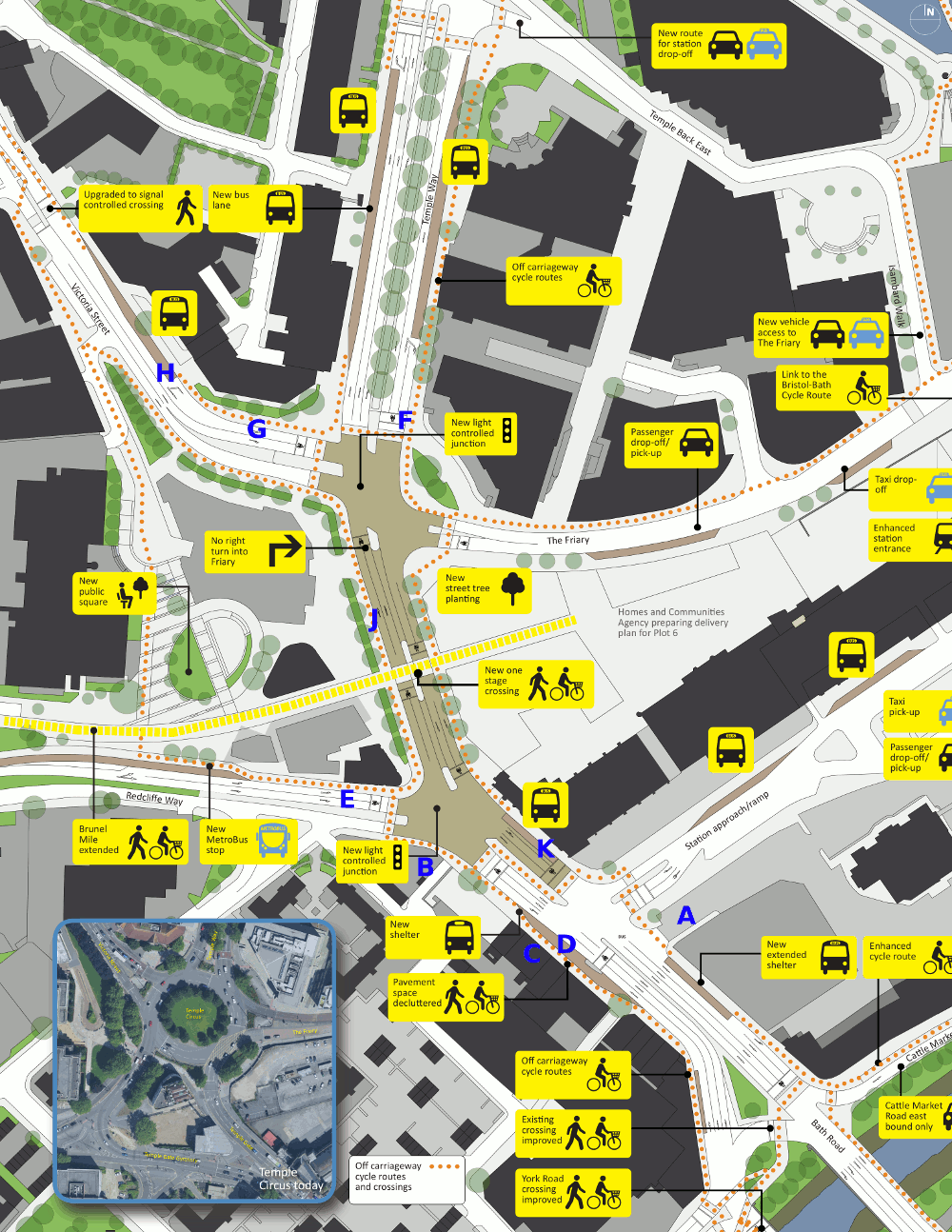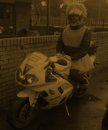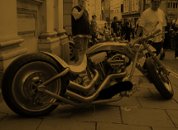A loud voice
107 of you contributed to the Bristol MAG response - that's around 10 percent of the total responses received by the council!
Now we must wait and see what effect it has on the council's proposals.
To see the council's original proposals in full visit http://www.bristoltemplequarter.com/gate
Responses to Temple Gate public consultation
Motorcycles present significant opportunities as part of wider transport solution. For many they are a more practical choice than cycling when distances are more than a few miles, but are faster and more economical than cars.
A European study highlighted that if just 10% of rush-hour journeys were made by motorcycle then congestion would be reduced to non-rush hour levels. This would significantly reduce stop-start traffic and improve air quality.
The Association of Chief Police Officers (ACPO) recently stated that more motorcyclists make for safer roads, improving safety for all, and that they intend to work with the MotorCycle Industry Association (MCIA) to promote motorcycling.
The Temple Gate area is a common route for motorcyclists - both for commuting and also for those visiting several major motorcycle businesses - Fowlers, Bristol Kawasaki, Bath Road Motorcycles, Meredith Motorcycles, Riders and Avon Motorcycles.
For these reasons good provision should be made for motorcycles during the redevelopment of the Temple Gate area.
Existing bike parking at Temple Meads is accessed via the off-camber, cobbled front entrance. Change access route to existing motorcycle parking to avoid cobbles or similar uneven & slippery surfaces.
The Reckless Engineer is a live music venue popular with motorcyclists & would benefit from motorcycle parking. Add secure motorcycle parking at A that can be used by customers of The Reckless Engineer and other businesses on Temple Gate.
Cycle path combined with bus-stop at D will limit space outside businesses to impractical levels. Customers and employees may require space outside to smoke, and the feel of the area may be enhanced by the cafes, pub etc having tables outside in the open. Suggest moving the bus-stop to J. This will still allow passengers easy access to Temple Meads station, and allow more space outside the Reckless Engineer and hotel next door.
Bus-stop at K causes congestion; people turning left into Station Approach get stuck behind buses & use middle lane inappropriately. Consider moving the bus-stop
Bus-lanes that stop short of a junction inevitably result in cars cutting into the left lane early, putting cyclists and motorcyclists at risk. Where possible bus-lanes should extend to the junction.
If cycle path at E results in narrow lanes this will prevent safe filtering by motorcycles. A shared bus / cycle / motorcycle lane here may be a better compromise for all. Cyclists heading east and south can instead use the Brunel Mile to cross Temple Gate and then the shared use path on East side.
Temple Back East provides access to the passenger drop off and The Friary. Why do southbound vehicles on Temple Way need to turn left into The Friary at F?. Extend the bus-lane to the junction and prohibit left turn.
At Victoria Street G the cycle path is already shown as intermittent H. Extend the bus-lane to the junction.
If all the bus-stops are moved to Station Approach and the taxis to The Friary then there will effectively be a "bus station" at Temple Meads, and it will move bus-stops from K - reducing congestion, and from D - allowing more space for the cycle path and customers of adjacent businesses.
Victoria Street and The Friary are staggered across the junction with Temple Way. This may make it more likely for cyclists and motorcyclists to be obscured, with the result that car drivers turning right will turn across the motorcyclists' paths. Careful layout and signalling will be needed to avoid this risk.
A more general solution may be to use continuous bus-lanes that can be used by buses, motorcyclists and cyclists. This would provide a solution for the most environmentally friendly forms of transport.
Wet or greasy man-hole covers should be positioned away from the "riding line" of two-wheelers. This can be difficult to predict in such an area and Bristol MAG would be willing to provide further consultation. MAG has positive experience of working with Preformed Markings Ltd who have developed an effective grip coating for covers that costs less than £50. It is requested that this coating be used to improve the safetyof powered two-wheelers (PTWs) and cyclists alike.
Features used to protect cyclists should not create additional hazards for motorcyclists. These include the use of "armadillo" and "tomb-stone" (Toby) bollards to segregate cycle lanes.
Armadillos are readily broken up by cars and heavier vehicles leaving debris and fixings that are a danger to both cyclists and motorcyclists.
Toby bollards - such as those on the Clarence Road scheme - are above motorcyclists' ankle height. If a motorcyclist moves far left to avoid any of the other hazards that we regularly face, then collision with these unlit bollards will cause serious injury.
Cyclists will benefit greatly from these segregated lanes but the only benefit of these intermittent features is to allow cyclists to move out into the main carriageway at whim. This luxury should not be provided by features that put Powered Two Wheelers (PTWs) at risk. A continuous kerb with holes for drainage would be a better compromise.
The Institute of Highways Engineers - with the help of Motorcycle Action Group - provide a set of guidelines to ensure that road networks and developments are safe and easy to use by motorcycle. A copy can be obtained from http://www.motorcycleguidelines.org.uk.

Right-click select "view image" to see full size image.
Alternatively select "save image as" to download it.

Officially known as "Toby" bollards.
Motorcyclists know them as Tomb-stones.
© Bristol MAG, 2016





